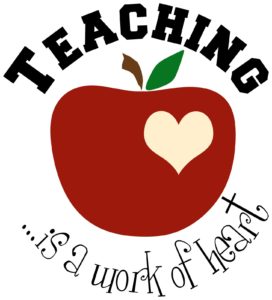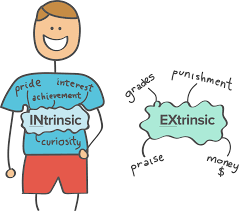True/False quiz. Final exam. Furrowed brow. Essay test. Ticket out the door. Socrative. Questions posed to students. Body language. Summary of lesson learned. Poll Everywhere. Reflection. Leaning in to see what a student has written. Conversation. An assignment. In class activities. A math problem. Writing a sentence. Types of questions asked in class. KWL. A team competition. Canvas course analytics. Research papers. Listening to students in groups. Student presentations. Quiz at end of class. Midterm exams. Benchmark tests. Observation. Self assessment. Think pair share. Clearest point, muddiest point. Projects. Conversation right after class. Office hours. Thumbs up, down, or sideways. Ranking from 1-5. Clarifying questions. Socrative discussion. 3-2-1. Conferencing.
Monthly Archives: February 2017
MEAGs & Innovation of the Year
This week’s writing ideas for Write 6×6 center around how we as members of the college community have worked to improve student learning or ways we improve our own work with students or colleagues.
A nomination for the Innovation of the Year award was submitted for the Maricopa Engineering Advising Guides. An official announcement should be out next week to learn how our nomination fared.
Maricopa Engineering Advising Guides
During and after the great recession, I got more serious about my role in advisement and how to better help students looking for secure and meaningful careers. I made an intentional choice to improve STEM advising because I researched and learned the increasing need for a modern workforce well versed in science, technology, engineering and Mathematics. It was important to me that our students had the best possible advising to aid their success in achieving jobs that would sustain them in the future.
One of the better ways I knew to magnify the quality and quantity of advisement was to streamline advising for engineering students. Engineering pathways are among the most complex and lengthy educational paths our students navigate. Mistakes, which are frequent, cost students and advisors time and money. Trust me when I tell you how much time it used to take to get it right. Advisors had to use multiple source documents to provide accurate information and that took time and lots of print outs.
Building on the work of Paula Cheslik, GCC Engineering Faculty who had information sheets that showed students how their GCC classes transfer to ASU, I built a 2-page “Advising Guide” that efficiently combined four distinct source documents into one. Enhancements included information on course sequences, prerequisites, GPA requirements, and options for concentrations that maximize transfer success and keeping students on track to graduate.
The guides were used at GCC, reviewed by a host of people, and refined for three years before launching them Districtwide this past summer with the help from faculty and staff. Now every engineering student at any of the Maricopa Community Colleges has a guide they and their advisor may use with consistently accurate information. The companion “Tips for Success If You Want to Be an Engineer” helps students as early as high school be informed and ready for our engineering pipeline to ASU.
Hooray! I feel really good about creating a new, highly- beneficial resource with help from a diverse group of dedicated individuals committed to student success. Special thanks to all those who took time to be involved improving and implementing the guides and resources, especially Paula Cheslik, Bassam Matar, Dr. Karen Conzelman, Dr. Ibrahim Naim, Kathy Silberman and Jay Franzen.
You can view the Maricopa Engineering Advising Guides here!
Filed under: STEAM Tagged: Assessment, Write 6X6
![]()
Humility + Assessment = Success
I have always been fascinated by assessment, unfortunately I know not everyone shares my feelings on the subject. I have had colleagues who consider it a dirty word. They dread the thought of it, and treat it as just another hoop to jump through when the time comes to participate.
A pre-test here.
A post-test there.
A journal reflection.
Or the ultimate avoidance, just saying a regular class assignment is, in fact, assessment.
Unfortunately, those who avoid confronting the challenges of assessments are not helping with the end goal, to improve student education through meaningful analysis and feedback.
The reason that some fear to participate in a group assessment and decide to take a solo route is that assessments are looked at as inconvenient or difficult; however, these approaches often overshadow efficient strategies for approaching this dilemma, strategies that which rely on one, simple trait: humility.
I love my standardized rubric for essays. It isn’t perfect, but it is consistent, and students appreciate that. The rubric is based off of one that is required to be used in the Kentucky Community and Technical College System. That system consists of 16 colleges and every writing instructor uses the same rubric for their essays. I was lucky enough to see that rubric be initially implemented as well as its evolution over the last decade into its current form.
Now there was significant pushback when the rubric was first forced upon the faculty. Arguments ranged from “but I don’t grade essays with a rubric” to “my rubric is already better than this one”, but top to bottom it was adopted.
It is difficult to adjust teaching habits, but understand that a standardized rubric doesn’t change the way we teach, it simply unifies the way we grade. In that way, a standard rubric is even less intrusive than requiring a specific assignment for assessment.
So what is gained from using the same rubric for every essay?
Starting on the class level, it is easy to get a snapshot of student’s skills improving (or not improving) over a semester. It also allows the teacher to see if the class as a whole is struggling in a specific area (I’m looking at you point of view slips). This lets allows class needs to be addressed on a holistic level through lectures. I do this with my youtube series “English Power Lectures”, but setting aside 15 minutes when essays are handed back to address major problems does the trick as well.
When multiple faculty start to use the same rubric the assessment becomes that much more valuable. Now trends can be seen over a much larger group of students, it is also possible to see where one class struggles and another doesn’t. With this knowledge, teachers can share techniques for dealing with that particular issue. This is the beauty (and truly the purpose) of assessment. It serves as a common tool and focal point that can start an analysis, conversation, and implementation of course wide improvements.
Now implementing something district or even school wide is difficult, so start small. Talk to a group of fellow faculty (or adjunct faculty) and do your best to develop a rubric that works for multiple assignments or essays. Use that rubric in a course and compare notes. It won’t be perfect, but assessment can always be improved upon. It may be difficult to unify your grading techniques with others, but remember that teaching isn’t meant to be a solo endeavor. Instructors are stronger as a community, and students will benefit from that community. All it takes is a little bit of humility.
Evaluation Plan for Faculty Can Be Fun. Really.

© Laura Strickland/MyCuteGraphics.com
So I’m a member of the Peer Assistance and Review (PAR) committee again this year. As a member of this committee, I have agreed to be a mentor for a probational faculty member that needs to comply with the RFP requirements. When I heard about these new requirements for probationary faculty, my first thought was, thank goodness I’m not probationary. I don’t want to have any part of that. Well, it turns out no one can really escape PAR. Even us old residential faculty, as all the newbies are required to have mentors. And with so many new faculty, pretty much everyone who is not new is a mentor.
The Maricopa Community College District implemented this new peer assistance and review model (PAR) for probationary faculty about 4 years ago. Faculty are considered probationary for 5 years. Under this new model, probationary faculty are assigned a residential faculty mentor to help guide them through the process to becoming residential (tenured). As part of the PAR, probationary faculty have the opportunity to document their professional growth, mentor evaluation, administrative evaluations, and student evaluations in a Google Sites template.
I actually ended up with two pretty awesome mentees. Both are excellent teachers and fun to work with. The best part is they make being a mentor fairly easy. I’m going to share my recent evaluation of one although evaluation isn’t quite the right word. It was more of an observation with feedback. Evaluation indicates the making of a judgment about the value of something; assessment. I’d like to believe all teaching has value, and it’s really not up to me to judge someone’s value or their teaching. I like to observe and then give feedback. Lucky for me what I’ve observed has always been inspiring.
Recently I sat in on an after class review session and the room was full. My first observation was how does that happen. Students stick around for a study session after class? The whole class was engaged. They were divided into groups of 2-4 and it appeared that they each had an assigned topic to cover. As the instructor called on each group, students were prepared with their information. Some reading from notes or slides; others reciting information from memory. My mentee was encouraging and peppered the whole class and group members with questions. Students volunteered answered. Whether they were correct or incorrect, they each received the same kind feedback that the answer was correct or incorrect. It didn’t seem punitive if the answer was not correct. Someone else was just called on to provide a different answer. The whole session was positive and encouraging. I was inspired, and I wasn’t even a student in the class.
It’s really good to see good teaching, but the best part is there is no one way about it. Every instructor brings her own touch to the classroom, and we can all learn by observing how others get the job done. Turns out that this whole PAR thing might not be such a bad thing after all.
Catch ’em Being Good
 Thank you, Louise So. Reading your post, DON’T FORGET THE GOOD ONES inspired me to write about intrinsic motivation. As an elementary school teacher, I made an effort to encourage intrinsic motivation in addition to using extrinsic rewards such as handing out stickers and saying “good job.”
Thank you, Louise So. Reading your post, DON’T FORGET THE GOOD ONES inspired me to write about intrinsic motivation. As an elementary school teacher, I made an effort to encourage intrinsic motivation in addition to using extrinsic rewards such as handing out stickers and saying “good job.”
I learned that if I just narrated the behavior of a student, I didn’t need to compliment or correct the student. Simply describing the scene allowed the individual to create their own intrinsic compliment or correction. For instance, if a student was totally on task and following instructions, I would announce to the class, “Jennifer wrote her name and the date on her paper and she’s highlighting the nouns and underlining our sight words.” Now, Jennifer can create her own intrinsic reward in her mind and the rest of the class is reminded of the expectation.
I think the narration technique builds intrinsic motivation. Using explicit and relevant details sends the message that I noticed Jennifer’s efforts. Recently, while grocery shopping, I noticed how nice the produce section looked. I told the produce employee, “Your produce section looks beautiful. Every item is in perfect rows.” I think he was stunned by my observation.
 I imagine that’s what most of us want – to know that once in awhile someone notices our hard work, not just our shortcomings. As adults, we don’t need stickers on a chart, but isn’t it nice when someone notices our everyday efforts? Just like the swimmers in Louise’s post, recognition of our efforts encourages us to do even better.
I imagine that’s what most of us want – to know that once in awhile someone notices our hard work, not just our shortcomings. As adults, we don’t need stickers on a chart, but isn’t it nice when someone notices our everyday efforts? Just like the swimmers in Louise’s post, recognition of our efforts encourages us to do even better.
Success or Failure?
“Did I pass?”, asks the student.
Testing employee responds, “Placement exams are not pass fail. Placement tests assist the college in making sure you are placed into the appropriate class. It looks like you placed into MAT 09X, ENG 101, and are reading exempt.”
“Yes, students must wait 24 hours between the 1st and 2nd attempt and 3 months before taking the test a third time.”
“What can I do to improve my scores?”
“We have practice questions, an in-person test prep workshop, and a phone app that can help bring forward prior knowledge”
This is a common conversation that Testing Services employees have with students completing placement exams. We have the difficult job of being realistic & responsive, providing hope, and encouraging students to enroll in classes. In this moment a person is more than the results and course placement. In these moments students may be questioning their ability to succeed, wondering why they have so many college prep classes to take, or feeling defeated and rejected.
In this moment, Testing Services is more than just administering a test. We are human. We feel what the student feels. We wish the student met their goal. We want to see the student succeed. We want the student to know that GCC is here for them. We want to see the student come back for retesting, start classes, and persist. When we see a student struggle through a setback, it is a reminder that we are not defined by scores and numbers.
 In these moments, we let the student know that we see and hear them. We let the student know there is hope. We manage our fears so they do not become the students. We stand strong, tall, and confidently. By doing this we respond to a challenge by providing support. We embrace our humanity.
In these moments, we let the student know that we see and hear them. We let the student know there is hope. We manage our fears so they do not become the students. We stand strong, tall, and confidently. By doing this we respond to a challenge by providing support. We embrace our humanity.
Placement testing tells us what we know and what we don’t know. It helps students learn where to begin their college journey. Testing evokes feelings. Placement Testing is more than greeting a student, telling them where to place their belongings, selecting a computer or desk, setting up the exam, and printing results. Testing is a human experience.
Don’t Forget the Good Ones!
A coworker referred her neighbor to my swim class and I learned something from the experience that I should already know, but apparently I had been slacking on.
If someone does something correctly and they do not need corrective feedback, they still need feedback.
The neighbor, as it turns out, is an awesome swimmer.
In a class of 12 swimmers, it is impossible to have eyes on everyone at all times, so generally, the ones that need the most help are going to get the help first, and the ones who can swim well are given more trust to take direction and practice the skill.
My coworker reported that her neighbor didn’t think she was doing very well in my class, as I had not given her much feedback.
The light bulb went on. Awesome swimmers don’t know they are awesome swimmers unless you tell them they are awesome and then tell them EXACTLY why they are awesome.
Ever since that learning experience, I have been practicing my feedback skills with the highly skilled individuals. One technique I have found very helpful is to have them demonstrate a skill for their peers. It is such an ego boost for the student to be the role model for the group.
Assessment and evaluation is a continuous process. It does not just happen at finite points in the semester. It is a process that is woven throughout the length of the course, and every student should feel the drive to improve in relation to their own level of success.
So, in our efforts to help the beginners, we also must boost the experts.
Assessment
Assessment is tricky business. There are so many different options to use in trying to assess how much the students have learned. And I just have to say, that grading is not one of the favorite parts of being an instructor. I have been teaching for a long time. I have tried several different ways to assess the students in my courses. What I have found to have made the biggest impact on their learning of, and retention of, mathematics, has not been my change in how I assess, but how often I assess. It isn’t unusual, in mathematics, to have your pass rate fall within the (50-60)% range. After having assessed basically at the end of chapters, 16 years ago I switched to assessing every week in many of the courses I teach. These are major assessments not just little quizzes. After this change I noticed a pass rate that was 20 to 35 percentage points higher than before. Here is an example, my college algebra course went from 55% to 80% pass rates on average with just this simple change. I’ve tried collecting Homework, daily quizzes, collaborative activities, large group projects, working at the board, etc. and none of those had the impact that this did. The biggest change wasn’t necessarily that the students were learning more but that more students were learning. The big change I saw was that the withdraw rate went from around 40% to 10%. I don’t know if this will happen in every subject or every different course within a subject area but I have seen it work for all of the courses I teach (intermediate algebra, college algebra, pre-calculus, and calculus 1 2 and 3). Give it a try if you haven’t ever.
Relevant, Student-Driven Teaching
Those of us who are very fortunate to have a variety of cultural representations within our classroom brick-and-mortar walls, it is imperative to give each and every one of those students a teaching voice. Not only will the teacher/professor become worldly and culturally enlightened by primary human sources, even more importantly, the peer students will be learning first-hand from native, first-generation immigrants and newly arrived refugees. We need to value and empower our precious human resources, the richly evolving cultural diversity molding moment-by-moment in America’s ever-changing society. As a developmental English and English as a Second Language college professor, I am very proud and honored to be facilitating cultural enrichment within the Maricopa community in Arizona. I encourage all teachers across America to capitalize on their human resources, which are richly present in their classrooms.
Keys of Leadership
Today’s leaders have to be more cooperative and transparent than ever before. How many of us have lived through scandals involving leaders at all levels? How many of us have lost faith in some form of leadership–local workplace leadership and local, state, and national political leadership? I’m sure we could all make a list of leaders who have fallen short. Why do some leaders cause their people to lose faith? Why do some leaders fail?
Looking at successful leaders, it’s easy to see why they have remained trustworthy and admirable. Michelle Obama said, “When they go low, we go high.” Leaders go high without letting injustices off the hook. Dr. Martin Luther King Jr.’s famous “Letter from Birmingham Jail” went high, but he still shared his disappointment with fellow clergy and white moderates for their indifference. Interestingly enough, the second sentence of his letter reads, “Seldom do I pause to answer criticism of my work and ideas.” While this might seem like he turned a deaf ear toward critics of his vision, instead he explains that he would not have time to get the “constructive” work done if he responded to those opposed to him and his methods. He listened, but he maintained his vision and continued his work toward justice.
In education today, we have to continue to work toward what is best for our students even in the face of criticism, sometimes disguised in the form of budget cuts or other subtle acts of devaluing education. Educational leaders continue on. Classroom instructors continue on. When the noise gets too loud, we focus even more intently on our classroom and students because this is the daily work that really matters–helping students progress toward their dreams and goals.
Finally, leaders emphasize input and cooperation from a chorus of voices. It’s tough to know which words any of us say that may open up a great idea or shut down dialogue–though it’s a bit easier to figure that last one out. Being authentic and kind allows all of us to take more risks. In taking risks, we are able to achieve beyond what was thought possible.


